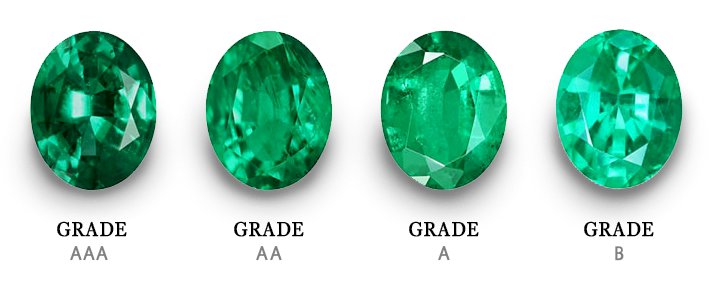Polished Emeralds and Their Classifications
What are the classifications of a polished emerald?

We have direct contact with 3 mining companies with emeralds of all classifications. Many accept real estate in exchange for generally rough stones, but some have stones also cut. All with documentation including for export.
Contact us: +55 35 9.8429-9938 WhatsApp
In general, a high quality emerald will have a tone in the range of Medium to Very Dark. But emeralds can fall into any of these categories. The tonal note alone does not determine the true quality of an emerald. Hue and saturation must also be considered.
Hue refers to the type of green color of an emerald. For example, a natural emerald can be called "bluish green" or "yellowish green". Most emeralds on the market today are Colombian, and Colombian emeralds have a "bluish green" color.
Saturation is what gives the color of an emerald its intensity and strength. Emerald saturation can range from very opaque green to pure and vivid. For example, "Medium Dark" stones are generally considered to be of high quality. However, if the stone has an opaque saturation, its overall quality is reduced. On the other hand, if a "Medium Light" stone shines with vivid saturation, it will be more attractive. That is why emeralds are classified by the three categories.
Emeralds are precious stones. Therefore, they can be classified by the preferred classification system for all precious stones: natural AAA, AA or A.
Natural AAA: highest quality. It represents only 10% of the precious stones. Natural AAA emeralds are rich green, with few inclusions and exhibit a very high gloss.
Natural AA: this is the second best category for precious stones. AA natural stones represent 20% to 30% of all stones. Emeralds in this category are medium green and may have moderate inclusions.
The natural: This category is responsible for 50% to 75% of all precious stones. Emeralds are dark green, heavily embedded and opaque. They are still good, but are considered to be of inferior quality to the above two categories.
In addition to AAA, AA and A, there is also a category called Heirloom / Rare Emerald. This is the highest quality, even better than AAA. They are extremely rare and expensive.
Inclusions are normal in emeralds, but if there are many, the stone will start to look less like a crystal. Too many inclusions can also compromise the durability of a stone and can decrease the value if they are too close to the surface. Low-light emeralds will have many inclusions, especially those close to the surface. However, it is important to understand that inclusions are a natural part of emeralds and you should always find them. The inclusions in emeralds are special and, if an emerald has no inclusions, it can be synthetic or imitation.
As emeralds are naturally included, it has become standard practice to treat stones with oils or resins in order to increase their clarity. Cedar oil is most commonly used to improve the clarity of emeralds, thereby improving their quality and overall class.
Emerald clarity refers to the appearance of the precious stone inside. The clarity of emeralds makes them different from any other gemstone. Most emeralds have inclusions that include small pieces of gas, other minerals and crystals and liquids that emeralds acquire during the crystallization process. It is normal for emeralds to have inclusions - in fact, about 99% of all natural emeralds include them. The Gemological Institute of America (GIA) created three categories of types of clarity for colored stones. They include type 1, type 2 and type 3 stones. Emeralds fall naturally into the Type 3 gemstone category.
Type 1 gemstones: they are usually free of inclusion or almost non-inclusion.
Type 2 gems: These gems are usually included.
Type 3 gemstones: they are almost always included.
Source: withclarity.com


